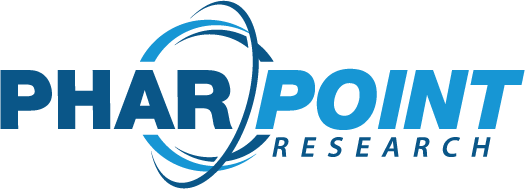Delivering high-quality, FDA compliant regulatory submissions
Each year, FDA’s Center for Drug Evaluation and Research (CDER) alone receives more than 300,000 submissions1 to review as part of the drug development process in the United States.
Regulatory submissions are a critical step to bringing new and improved treatment options to patients, and their success relies not only on a safe and effective clinical trial but also on the quality of data contained in a submission package.
With so many submissions coming in each year — amounting to millions of pieces of data for review — FDA requires submissions to adhere to a set of uniform data standards, ensuring reviewers can easily find and access information.
These standards, denoted in the FDA Data Standards Catalog, also ensure reviewers are able to focus more on scientific review rather than spending time navigating huge amounts of less-structured data.
To ensure that FDA can successfully and efficiently review submission packages, support from a biostatistics team with experience in delivering high-quality, compliant submissions is necessary.
The impact of an unsatisfactory submission
According to a 2014 investigation into the scientific and regulatory reasons for delay and denial of FDA submissions, while some new drug applications fail because of inadequate drug performance, others fail to gain FDA approval because the information submitted is unsatisfactory.2
The report, which looked at all drug applications first submitted to FDA between 2000-2012 for new molecular entities (NMEs), found that 50% of applications were approved when first submitted. 73% of submissions were ultimately approved.
Of the 71 applications that required one or more resubmissions before approval, there was a median delay to approval of 435 days.2
Early interaction with a skilled biostatistics consultant, combined with submission support from a CRO with ample experience supporting regulatory submissions, can help sponsors effectively navigate the submission process and bring a lifesaving drug to market faster.
How early biostatistician interaction can support better regulatory submissions
Sponsors can greatly benefit from involving a biostatistician in all stages of design and development, as they play a vital role in the successful outcome of a trial and can help a sponsor navigate regulatory discussions. Additionally, early partnering can shorten the time from final data to integrated analysis.
During new drug application review, an FDA biostatistician will perform an independent, rigorous statistical analysis of the submitted clinical trial and other relevant data.
On the sponsor’s side, having their own strong biostatistician at the table can provide value as a submission moves through the regulatory process. The sponsor’s statistician can help provide statistical representation as needed, clearly explaining issues or concerns that non-statisticians may find challenging.
Additionally, a biostatistician is often essential in the construction of briefing materials. The biostatistician used by a sponsor must be able to provide clear, specific questions related to the structure and content of integrated analyses and supporting data that allow FDA to provide clear, specific responses to ensure both parties understand the submission contents.
Conclusion
In conclusion, consulting biostatisticians and a CRO with a strong statistics team can provide critical support for sponsors before and during the regulatory submission process.
Through early and continuous engagement, biostatisticians can significantly impact the successful outcome of drug development projects. They facilitate clearer communication with regulatory bodies, help avoid unnecessary delays due to unsatisfactory submissions, and increase the likelihood of first-time approval. Engaging a biometrics partner with submissions experience early in the development process can facilitate faster analyses and earlier submission timelines.
Looking for a biostatistics consultant or biometrics CRO team to support your company through the regulatory submission process?
Learn more about PharPoint’s biostatistics and statistical programming services or contact our business development team for a conversation.
About PharPoint
PharPoint Research is a consultative, client-focused CRO that helps innovative sponsors meet their clinical trial goals. Our team regularly helps clients plan, manage, and analyze efficient and high-quality clinical trials and has supported over 30 successful regulatory submissions.



